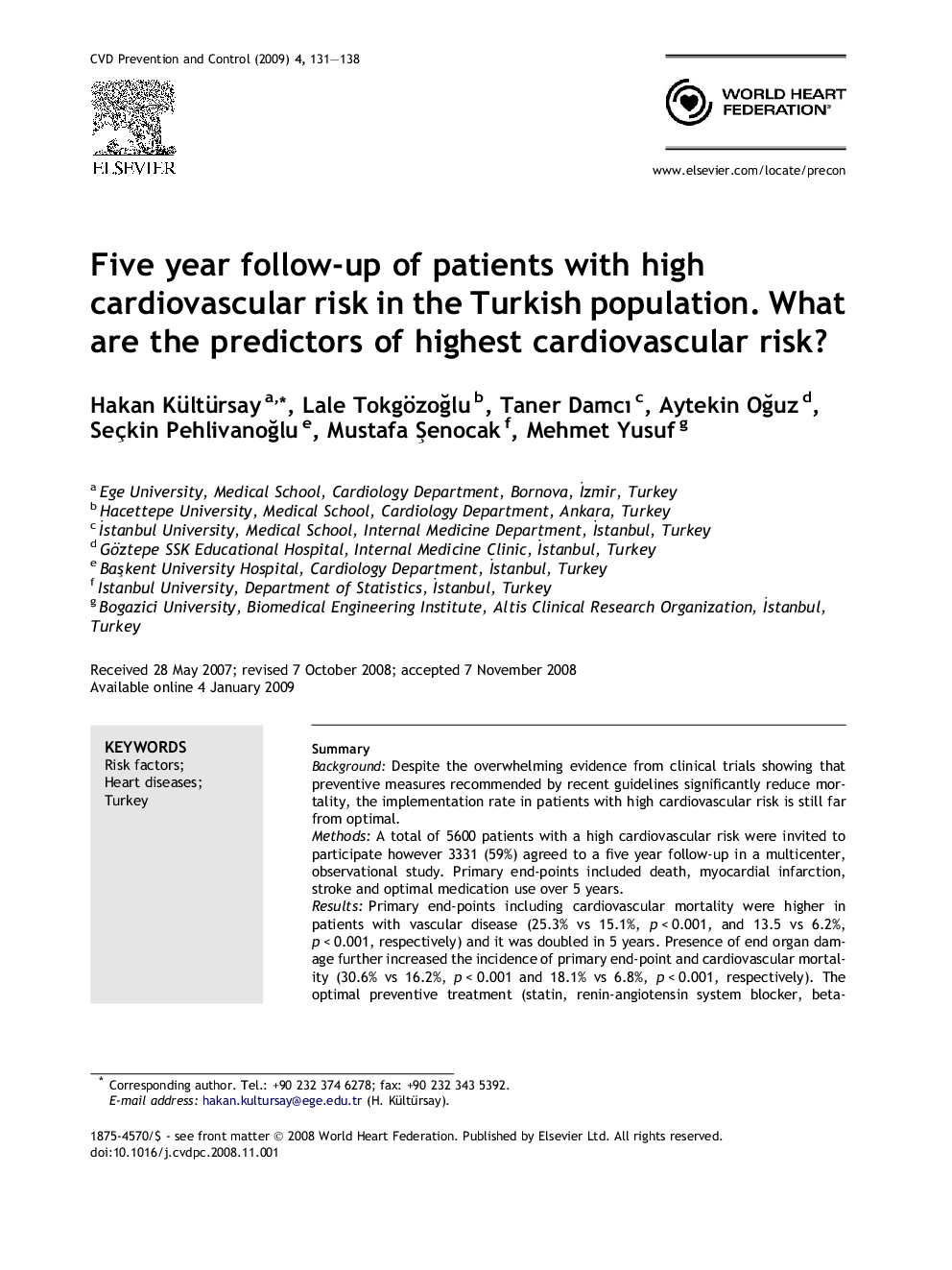| Article ID | Journal | Published Year | Pages | File Type |
|---|---|---|---|---|
| 2909632 | CVD Prevention and Control | 2009 | 8 Pages |
SummaryBackgroundDespite the overwhelming evidence from clinical trials showing that preventive measures recommended by recent guidelines significantly reduce mortality, the implementation rate in patients with high cardiovascular risk is still far from optimal.MethodsA total of 5600 patients with a high cardiovascular risk were invited to participate however 3331 (59%) agreed to a five year follow-up in a multicenter, observational study. Primary end-points included death, myocardial infarction, stroke and optimal medication use over 5 years.ResultsPrimary end-points including cardiovascular mortality were higher in patients with vascular disease (25.3% vs 15.1%, p < 0.001, and 13.5 vs 6.2%, p < 0.001, respectively) and it was doubled in 5 years. Presence of end organ damage further increased the incidence of primary end-point and cardiovascular mortality (30.6% vs 16.2%, p < 0.001 and 18.1% vs 6.8%, p < 0.001, respectively). The optimal preventive treatment (statin, renin-angiotensin system blocker, beta-blocker and antiplatelet) rate was low and did not change significantly in 5 years, although the consistent use of angiotensin-converting enzyme inhibitor seemed to be a protective predictor of cardiovascular mortality.ConclusionIn this high risk Turkish population, mortality and morbidity in the medium to long term were high and the implementation rate of optimal preventive treatment unacceptably low. The highest risk subgroup was identified to be those with previous vascular disease/event and end organ damage requiring aggressive medical treatment.
